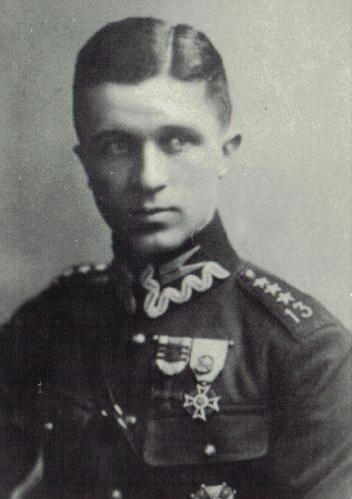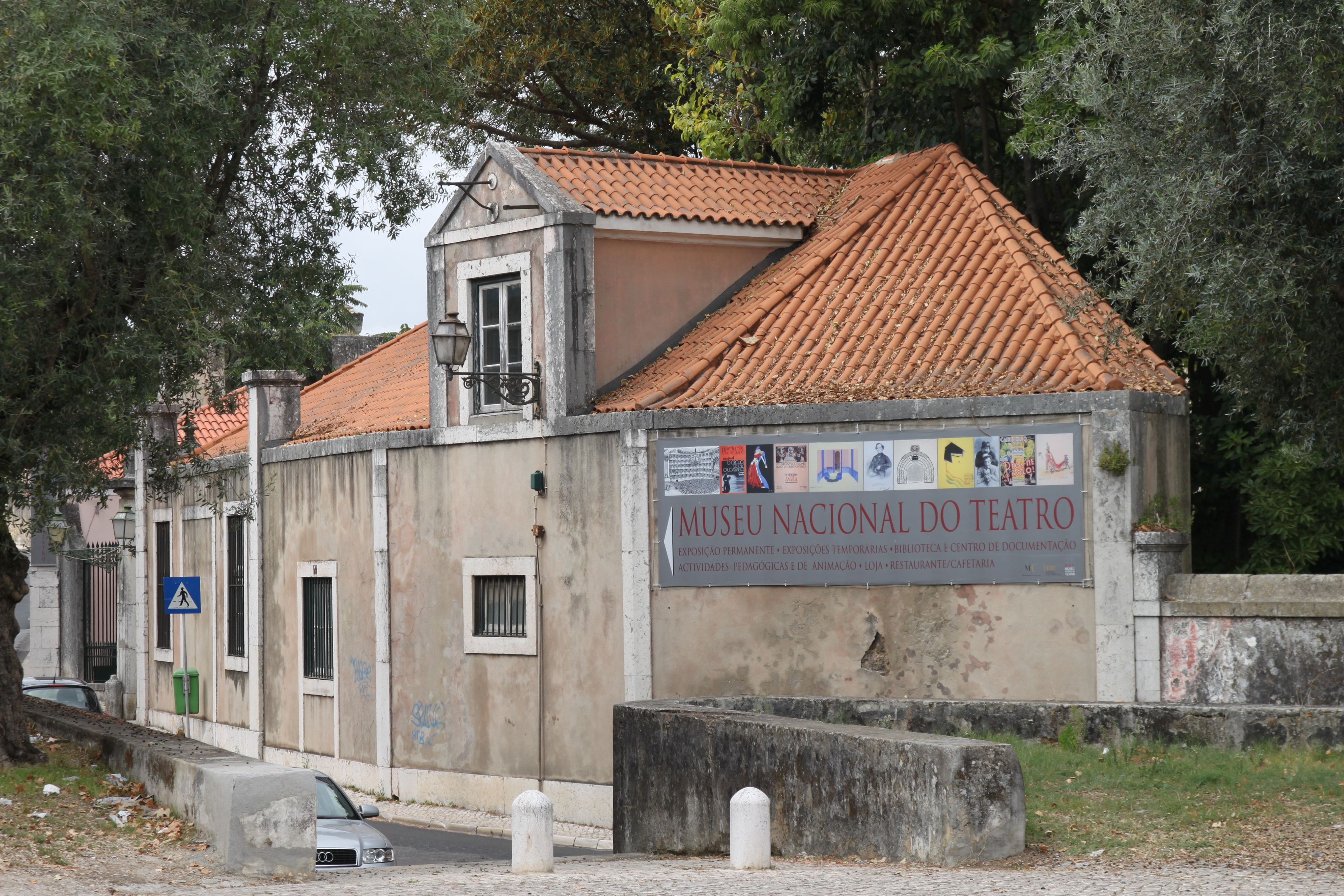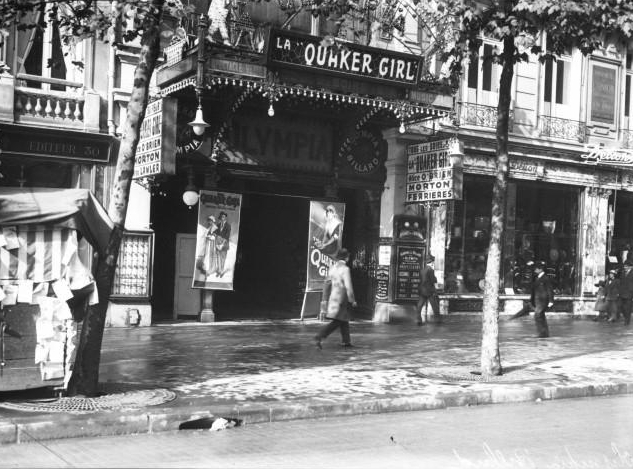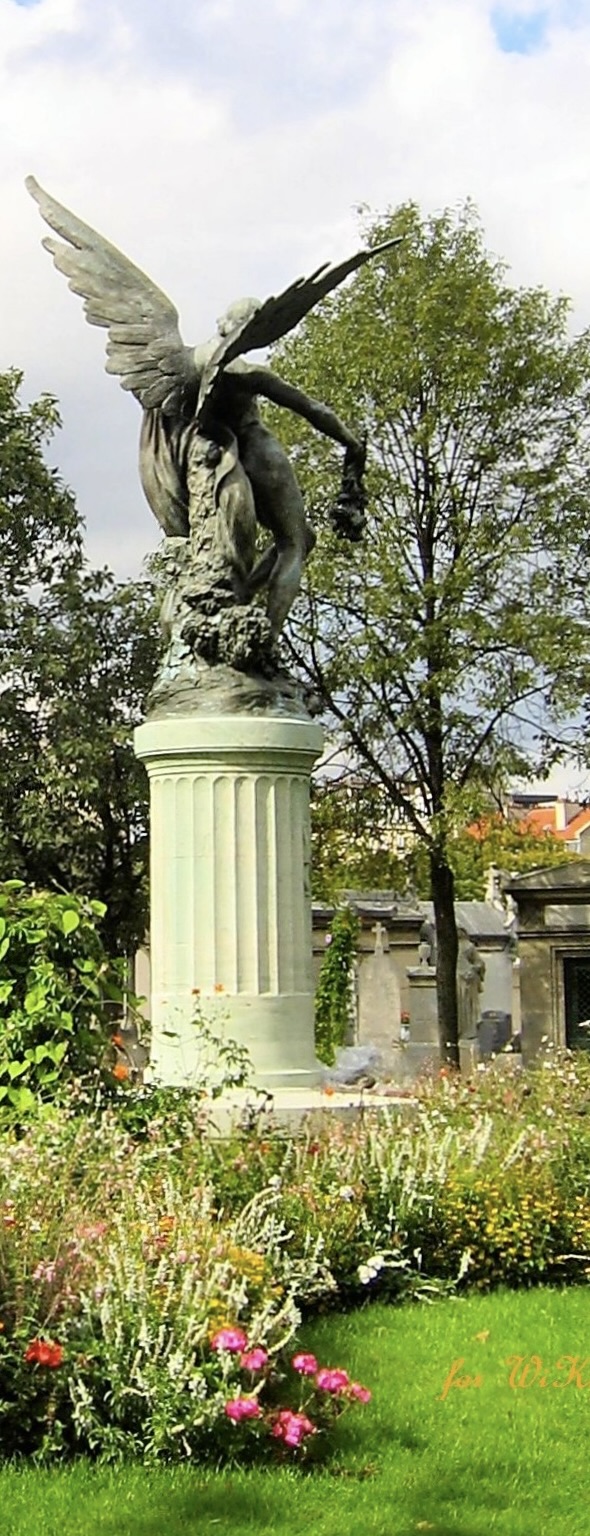|
Lea Niako
Maria Kruse (1908–?), better known by her stage name Lea Niako, was a German exotic dancer and actress. Niako was renowned across Europe for her dance performances in the late interwar period, from 1926 to 1933. She often performed with little to no clothes; nude dancing, or ''Nackttanz'', was at the time popular and was seen as an artistic expression of modernity and emancipation. For her unusual and exotic performances, she garnered great attention in the international press. She also broke through into the film industry, appearing in the Portuguese film ''Fátima Milagrosa'' (1928) and the Spanish film ''La Carta'' (1931). Niako is most famous for her involvement in the German arrest of the Polish spy Jerzy Sosnowski in 1934. She met and fell in love with Sosnowski in Budapest in 1933, not knowing that he was a spy. After Sosnowski told her in Berlin of his espionage activities and she learnt of his numerous affairs with other women she panicked and confided with an acquainta ... [...More Info...] [...Related Items...] OR: [Wikipedia] [Google] [Baidu] |
Wilhelm Willinger
Maurus (Mor) Wilhelm (Vilmos) Willinger (9 April 1879 – 29 January 1943) was an Austrian/Hungarian photographer who is best known for his portraits of actors of the early silent film era in Berlin. Life Willinger was born in Budapest, Austria-Hungary, and lived there until 1900. From 1902 to 1918, he ran a photo agency in Berlin while maintaining a studio at Orczy út 8 in Pest. He married Margarethe (who ran the darkroom) and they had a son László Willinger (1909–1989) who also became a portrait photographer. In Berlin he was registered in W 30 at Schwäbische Straße 8. During the First World War, Willinger was an Honvéd officer in the Austro-Hungarian Army. After the war, in 1919, he established a studio in Vienna together with Hans Schnapper. In 1921, Schnapper left the studio and Willinger became the sole owner. The Willinger & Schnapper company was located in Kärntnerstraße 28 in the First District of Vienna and remained at that address until 1938 when it was ... [...More Info...] [...Related Items...] OR: [Wikipedia] [Google] [Baidu] |
Character Dance
Character dance is a specific subdivision of classical dance. It is the stylized representation of a traditional folk or national dance, mostly from European countries, and uses movements and music which have been adapted for the theater. Character dance is integral to much of the classical ballet repertoire. A good example of character dance within ballet is the series of national dances which take place at the beginning of Act II of ''Swan Lake''. The ballet ''Don Quixote'' also features many character variations based on traditional Spanish dances. Popular character dance adaptations for ballet also include the national dances of Hungary , Russia, Poland, Italy and Spain: csárdás, mazurka, tarantella, flamenco, etc. One of the best known schools that incorporate character dance to teaching syllabus is Vaganova Ballet Academy. Outside of Russia and the former republics of the late Soviet Union, there is little training in the art of character dance. However, it is still ... [...More Info...] [...Related Items...] OR: [Wikipedia] [Google] [Baidu] |
National Theatre And Dance Museum
The National Theatre and Dance Museum ( pt, Museu Nacional do Teatro e da Dança) is a museum in Lisbon, Portugal Portugal, officially the Portuguese Republic ( pt, República Portuguesa, links=yes ), is a country whose mainland is located on the Iberian Peninsula of Southwestern Europe, and whose territory also includes the Atlantic archipelagos of .... References External linksOfficial websiteThe National Theatre and Dance Museum on Google Arts & Culture Museums in Lisbon Theatre in Portugal Theatre museums {{Portugal-museum-stub ... [...More Info...] [...Related Items...] OR: [Wikipedia] [Google] [Baidu] |
Lisbon
Lisbon (; pt, Lisboa ) is the capital and largest city of Portugal, with an estimated population of 544,851 within its administrative limits in an area of 100.05 km2. Grande Lisboa, Lisbon's urban area extends beyond the city's administrative limits with a population of around 2.7 million people, being the List of urban areas of the European Union, 11th-most populous urban area in the European Union.Demographia: World Urban Areas - demographia.com, 06.2021 About 3 million people live in the Lisbon metropolitan area, making it the third largest metropolitan area in the Iberian Peninsula, after Madrid and Barcelona. It represents approximately 27% of the country's population. [...More Info...] [...Related Items...] OR: [Wikipedia] [Google] [Baidu] |
Teatro São Luiz
The Teatro São Luiz is a theatre located in the Chiado district of the Portuguese capital of Lisbon. It opened on 22 May 1894. Early history ''Teatro Municipal de São Luiz'' was the idea of the Portuguese actor, Guilherme da Silveira, who became its first technical director. He persuaded several investors to fund the new theatre, led by Luís de Braga Júnior, the Viscount of São Luiz de Braga. The French architect Louis Reynaud was contracted to design the theatre, giving it a "Parisian" style. Interior decorations included a fresco by the Italian set designer, Luigi Manini. The theatre was originally named the ''Teatro Dona Amélia'', after the then Queen of Portugal and the Queen and King Carlos attended the official opening on 22 May 1894, their eighth wedding anniversary. The first performance was Offenbach’s comic operetta, '' The Drum Major’s Daughter''. The theatre quickly became an important cultural and artistic centre of the elite of Lisbon. It attracted man ... [...More Info...] [...Related Items...] OR: [Wikipedia] [Google] [Baidu] |
Vienna
en, Viennese , iso_code = AT-9 , registration_plate = W , postal_code_type = Postal code , postal_code = , timezone = CET , utc_offset = +1 , timezone_DST = CEST , utc_offset_DST = +2 , blank_name = Vehicle registration , blank_info = W , blank1_name = GDP , blank1_info = € 96.5 billion (2020) , blank2_name = GDP per capita , blank2_info = € 50,400 (2020) , blank_name_sec1 = HDI (2019) , blank_info_sec1 = 0.947 · 1st of 9 , blank3_name = Seats in the Federal Council , blank3_info = , blank_name_sec2 = GeoTLD , blank_info_sec2 = .wien , website = , footnotes = , image_blank_emblem = Wien logo.svg , blank_emblem_size = Vienna ( ; german: Wien ; ba ... [...More Info...] [...Related Items...] OR: [Wikipedia] [Google] [Baidu] |
Diario De La Marina
''Diario de la Marina'' was a newspaper published in Cuba, founded by Don Nicolás Rivero in 1832. ''Diario de la Marina'' was Cuba’s longest-running newspaper and the one with the highest circulation. Its roots went back to 1813 with ''El Lucero de la Habana'' (The Havana Star) and the ''Noticioso Mercantil'' (The Mercantile Seer) whose 1832 merger established ''El Noticioso y Lucero de la Habana'', which was renamed ''Diario de la Marina'' in 1844. Though a conservative publication, its pages gave voice to a wide range of opinions, including those of avowed communists. It gave a platform to essayist Jorge Mañach and many other distinguished Cuban intellectuals. Over its long history ''La Marina'' represented a conservative philosophy that from 1902 to 1959, opposing the dictatorships of Gerardo Machado in the 1930s and Fulgencio Batista in the 1950s. Its valiant attempt to maintain that tradition of opposition under Castro included being the only newspaper that published the ... [...More Info...] [...Related Items...] OR: [Wikipedia] [Google] [Baidu] |
Nude Dancing
A striptease is an erotic or exotic dance in which the performer gradually undresses, either partly or completely, in a seductive and sexually suggestive manner. The person who performs a striptease is commonly known as a "stripper" or an "exotic dancer". In Western countries, the venues where stripteases are performed on a regular basis are now usually called strip clubs, though they may be performed in venues such as pubs (especially in the United Kingdom), theaters and music halls. At times, a stripper may be hired to perform at a bachelor or bachelorette party. In addition to providing adult entertainment, stripping can be a form of sexual play between partners. This can be done as an impromptu event or – perhaps for a special occasion – with elaborate planning involving fantasy wear, music, special lighting, practiced dance moves, or unrehearsed dance moves. Striptease involves a slow, sensuous undressing. The stripper may prolong the undressing with delayi ... [...More Info...] [...Related Items...] OR: [Wikipedia] [Google] [Baidu] |
Comœdia
''Comœdia'' was a French literary and artistic paper founded by Henri Desgrange on 1 October 1907 (Desgrange had already founded '). It published a number of texts by important literary figures, including Antonin Artaud's first publication on theatre, ''L'évolution'' de ''décor'' he Evolution of Decor(1924)''.'':602 According to Richard Abel, it provides one of the most complete sources of cultural history in France just prior to World War I World War I (28 July 1914 11 November 1918), often abbreviated as WWI, was one of the deadliest global conflicts in history. Belligerents included much of Europe, the Russian Empire, the United States, and the Ottoman Empire, with fightin .... References External links * 1907 establishments in France 1944 disestablishments in France Defunct newspapers published in France Newspapers published in Paris {{France-newspaper-stub ... [...More Info...] [...Related Items...] OR: [Wikipedia] [Google] [Baidu] |
Olympia (Paris)
The Olympia (; commonly known as L'Olympia or in the English-speaking world as Olympia Hall) is a concert venue in the 9th arrondissement of Paris, 9th arrondissement of Paris, France, located at 28 Boulevard des Capucines, equally distancing La Madeleine, Paris, Madeleine church and Palais Garnier, Opéra Garnier, north of Place Vendôme, Vendôme square. Its closest métro/RER stations are Madeleine (Paris Métro), Madeleine, Opéra (Paris Métro), Opéra, Havre – Caumartin (Paris Métro), Havre – Caumartin, and Auber (Paris RER), Auber. The hall was opened in 1893 by one of the two co-creators of the Moulin Rouge venue, and saw many opera, ballet, and music hall performances. Theatrical performances declined in the late 1920s and the Olympia was converted into a cinema, before re-opening as a venue in 1954 with Bruno Coquatrix as executive director. Since the 1960s, it has been a popular venue for rock bands. The Olympia was threatened with demolition in the early 1990s, ... [...More Info...] [...Related Items...] OR: [Wikipedia] [Google] [Baidu] |
Paris
Paris () is the capital and most populous city of France, with an estimated population of 2,165,423 residents in 2019 in an area of more than 105 km² (41 sq mi), making it the 30th most densely populated city in the world in 2020. Since the 17th century, Paris has been one of the world's major centres of finance, diplomacy, commerce, fashion, gastronomy, and science. For its leading role in the arts and sciences, as well as its very early system of street lighting, in the 19th century it became known as "the City of Light". Like London, prior to the Second World War, it was also sometimes called the capital of the world. The City of Paris is the centre of the Île-de-France region, or Paris Region, with an estimated population of 12,262,544 in 2019, or about 19% of the population of France, making the region France's primate city. The Paris Region had a GDP of €739 billion ($743 billion) in 2019, which is the highest in Europe. According to the Economist Intelli ... [...More Info...] [...Related Items...] OR: [Wikipedia] [Google] [Baidu] |
Montparnasse
Montparnasse () is an area in the south of Paris, France, on the left bank of the river Seine, centred at the crossroads of the Boulevard du Montparnasse and the Rue de Rennes, between the Rue de Rennes and boulevard Raspail. Montparnasse has been part of Paris The area also gives its name to: * Gare Montparnasse: trains to Brittany, TGV to Rennes, Tours, Bordeaux, Le Mans; rebuilt as a modern TGV station; * The large Montparnasse – Bienvenüe métro station; * Cimetière du Montparnasse: the Montparnasse Cemetery, where, among other celebrities, Charles Baudelaire, Constantin Brâncuși, Jean-Paul Sartre, Simone de Beauvoir, Man Ray, Samuel Beckett, Serge Gainsbourg and Susan Sontag are buried; * Tour Montparnasse, a lone skyscraper. The Pasteur Institute is located in the area. Beneath the ground are tunnels of the Catacombs of Paris. Students in the 17th century who came to recite poetry in the hilly neighbourhood nicknamed it after "Mount Parnassus", home to the nin ... [...More Info...] [...Related Items...] OR: [Wikipedia] [Google] [Baidu] |




.png)



